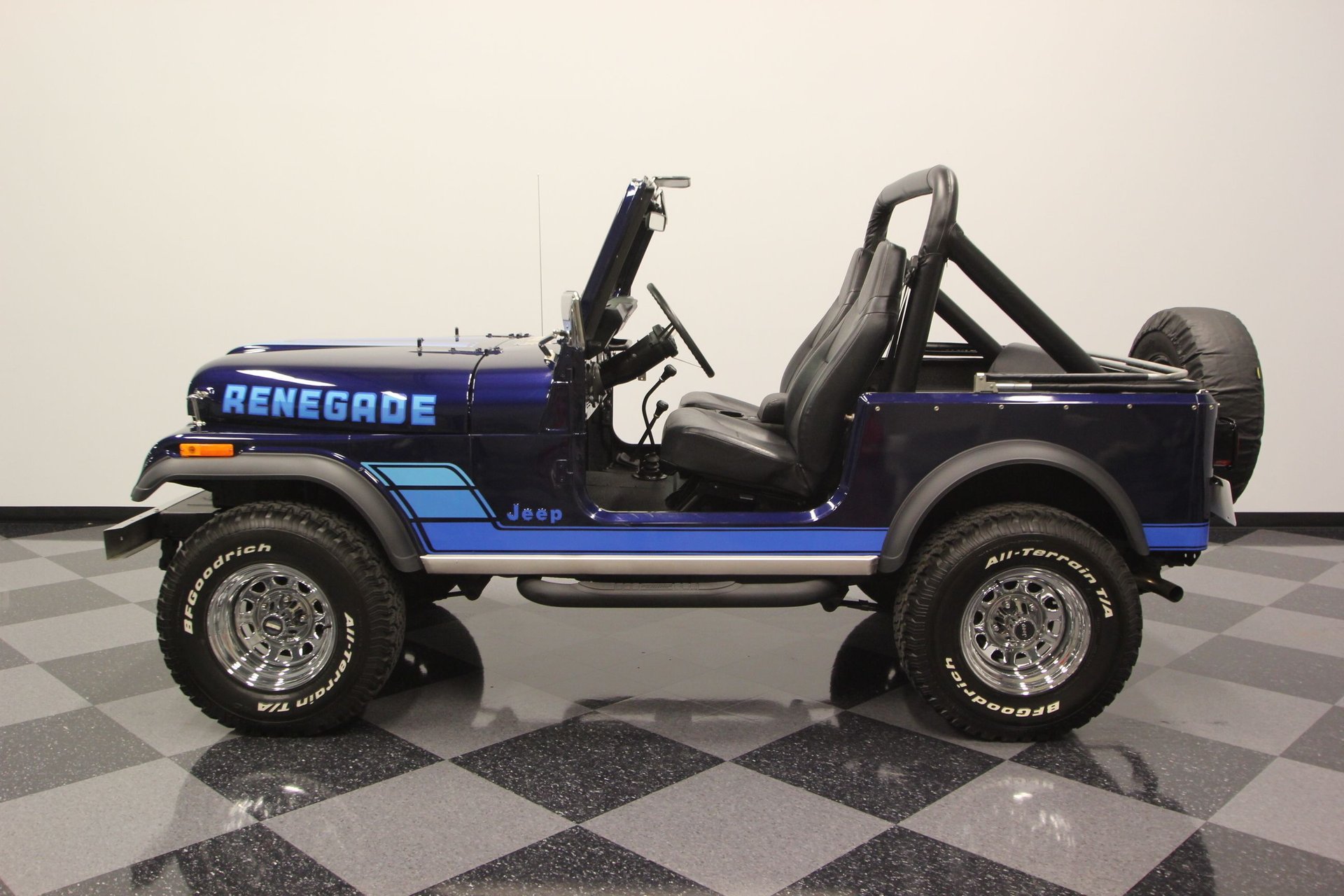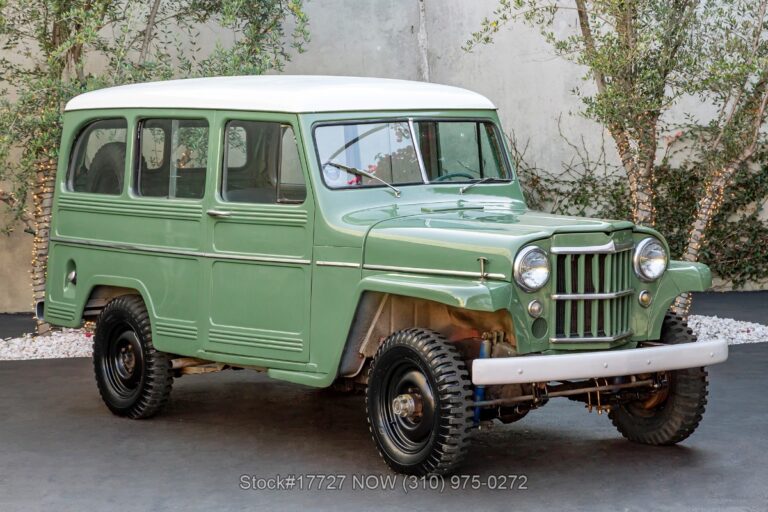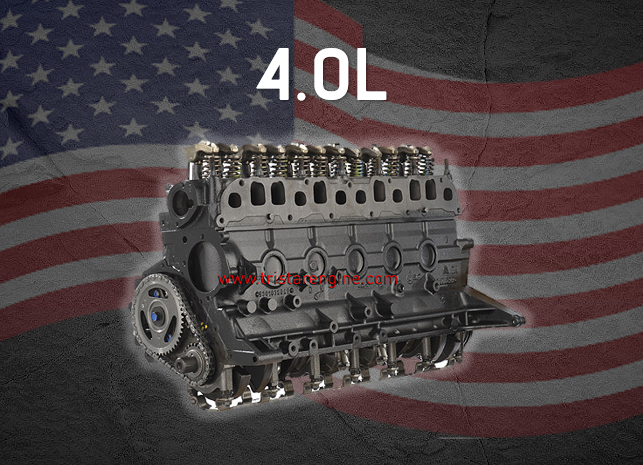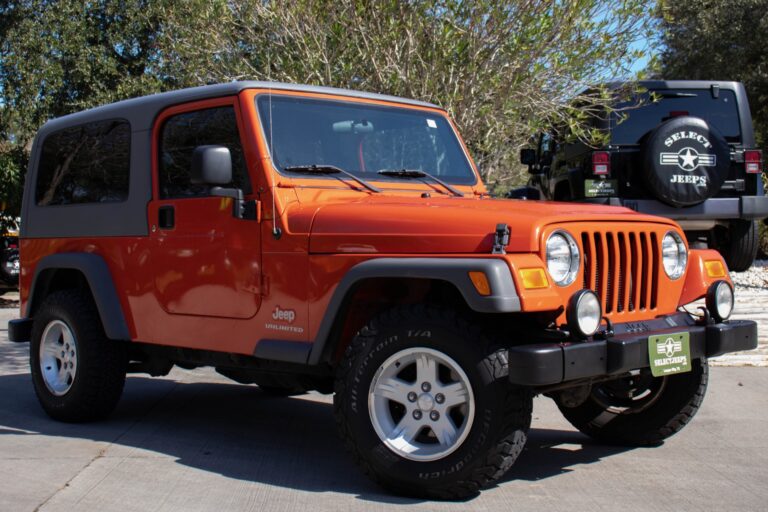1983 CJ7 Jeep For Sale: Your Ultimate Guide to Owning a Classic Off-Road Icon
1983 CJ7 Jeep For Sale: Your Ultimate Guide to Owning a Classic Off-Road Icon jeeps.truckstrend.com
The allure of a vintage Jeep is undeniable, and among the pantheon of off-road legends, the 1983 CJ7 holds a particularly revered spot. More than just a vehicle, it represents an era of rugged simplicity, go-anywhere capability, and an enduring spirit of adventure. For enthusiasts and collectors alike, finding a 1983 CJ7 Jeep for sale isn’t just about acquiring a mode of transportation; it’s about investing in a piece of automotive history, a blank canvas for customization, and a ticket to an unparalleled driving experience. This comprehensive guide will navigate you through everything you need to know about purchasing and owning this iconic 4×4.
The Enduring Appeal of the 1983 CJ7 Jeep
1983 CJ7 Jeep For Sale: Your Ultimate Guide to Owning a Classic Off-Road Icon
The Jeep CJ (Civilian Jeep) series boasts a lineage stretching back to the battlefields of World War II, evolving into the beloved recreational vehicle we know today. The CJ7, produced from 1976 to 1986, is often considered the pinnacle of the CJ line due to its slightly longer wheelbase (10 inches longer than the CJ5), which improved stability without sacrificing its legendary agility. The 1983 model year is particularly significant as it falls within the later years of the CJ7’s production, benefiting from refinements while retaining the classic styling and robust mechanicals that define the series.
What makes the 1983 CJ7 so sought after? Its appeal lies in its rugged simplicity, solid axles (Dana 30 front, AMC 20 rear), and an availability of powertrain options including the venerable AMC 4.2L (258 cubic inch) inline-six engine, known for its torque and durability. Unlike later Wranglers, the CJ7 maintains a more direct, unfiltered connection to the road and trail, offering a pure, unadulterated off-roading experience. Its iconic round headlights, seven-slot grille, and removable doors and top make it instantly recognizable and endlessly customizable, allowing owners to tailor it to their exact specifications, whether for extreme rock crawling, beach cruising, or simply a nostalgic weekend drive.
What to Look For When Buying a 1983 CJ7 Jeep
Purchasing a vehicle that’s four decades old requires careful scrutiny. Here’s a detailed checklist of what to examine when a 1983 CJ7 Jeep is for sale:
1. Rust Inspection: The Primary Concern
Rust is the archenemy of vintage Jeeps. Thoroughly inspect:
- Frame: Pay close attention to the main rails, especially near body mounts, spring hangers, and behind the front wheels. Look for flaking, bubbling, or perforations.
- Body Tub: Check floorboards (especially under the seats and footwells), rocker panels, wheel wells, and the rear cargo area. Many CJs suffered from water pooling here.
- Fenders & Grille: Rust often appears where these components meet the body.
- Door Sills & Hinges: Common areas for corrosion due to exposure.
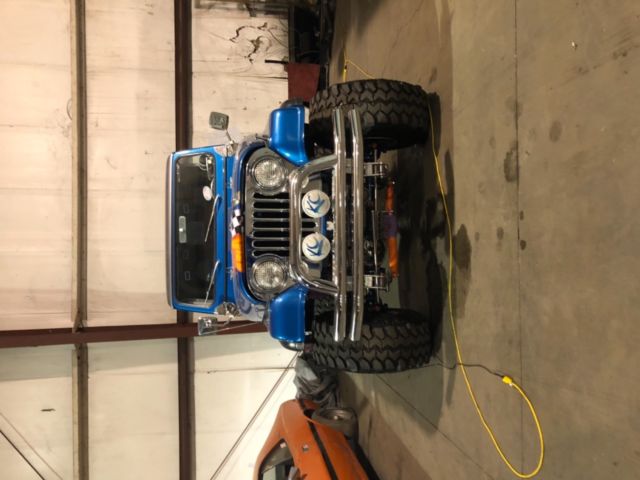
2. Engine & Drivetrain

- Engine: The 4.2L I6 is common. Check for oil leaks (rear main seal is common), strange noises, smooth idle, and proper acceleration. Look for signs of overheating. If it’s a V8 swap, inquire about the quality of the conversion.
- Transmission: Manual transmissions (T4, T5, T176) and automatic (TF999) were offered. Test all gears for smooth engagement and listen for grinding or popping out of gear.
- Transfer Case (Dana 300): Engage 4-high and 4-low. Listen for excessive noise and ensure it shifts smoothly. Check for leaks.
- Axles: Check for leaks at the differential covers and pinion seals. Listen for humming or grinding noises, which could indicate worn gears or bearings.
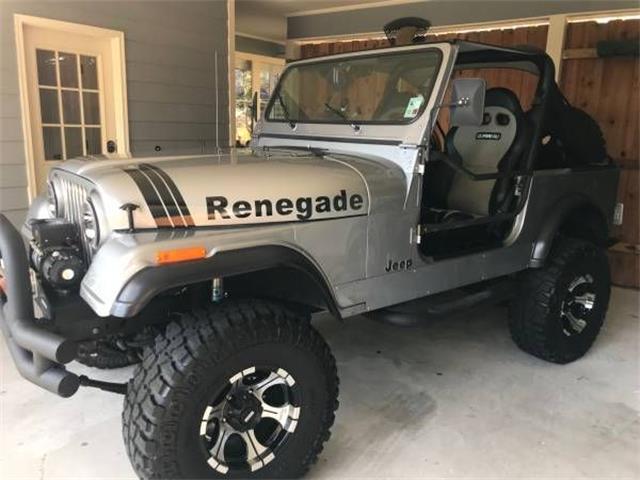
3. Suspension & Steering
- Leaf Springs & Shocks: Look for sagged or broken leaf springs. Test shocks by pressing down on each corner of the Jeep; it should rebound once.
- Bushings: Inspect all suspension and steering bushings for cracks or deterioration.
- Steering Play: With the engine off, turn the steering wheel back and forth. Excessive play before the wheels turn indicates wear in the steering box, tie rod ends, or ball joints.
4. Brakes & Electrical
- Brakes: Check the master cylinder for leaks. Test brake pedal feel (should be firm, not spongy). Inspect brake lines for rust or damage.
- Electrical System: Test all lights (headlights, tail lights, turn signals, brake lights), gauges, horn, wipers, and heater fan. Wiring issues are common in older vehicles, especially if poorly modified.
5. Interior & Exterior
- Seats & Dash: Look for tears, cracks, and overall condition. Ensure all gauges work.
- Roll Bar: Check for any signs of damage or modification.
- Top & Doors: Determine if it comes with a hardtop, soft top, or both. Assess their condition (tears in soft top, cracks in hardtop). Check door alignment and latching.
- Tires: Check tread depth and tire age (indicated by a 4-digit DOT code).
6. Documentation
Always request the vehicle title to verify ownership and ensure it’s clean (no salvage or flood history). Ask for service records, receipts for modifications, and any history the current owner can provide.
Common Modifications and Upgrades
One of the greatest appeals of the CJ7 is its modular design and the vast aftermarket support. Many 1983 CJ7s for sale will have already undergone modifications.
- Lift Kits & Larger Tires: Very common for increased ground clearance and off-road capability. Ensure the lift was professionally installed and doesn’t negatively impact handling.
- Engine Swaps: V8 engine swaps (especially GM 350 or Ford 302) are popular for more power.
- Axle Upgrades: Dana 44s or Ford 8.8 axles are often swapped in for increased strength.
- Aftermarket Seats & Consoles: For improved comfort and storage.
- Winch & Heavy-Duty Bumpers: For recovery and protection.
- Fuel Injection Conversion: Replacing the carburetor with a TBI (Throttle Body Injection) system significantly improves reliability, starting, and fuel efficiency.
Understanding the modifications helps assess value and future maintenance needs. A well-executed modification can add value, while a shoddy one can be a headache.
Pricing Your 1983 CJ7: Factors Influencing Value
The price of a 1983 CJ7 Jeep can vary wildly, from a few thousand dollars for a project vehicle to upwards of $30,000 for a fully restored, show-quality example. Here’s what influences its value:
- Condition: This is the most significant factor. Is it a rusty shell, a solid driver, or a meticulous restoration?
- Originality vs. Modifications: Highly original, low-mileage examples often fetch premium prices from collectors. However, well-executed, desirable modifications can also increase value for off-road enthusiasts.
- Engine Type: A well-running 4.2L I6 is desirable. A professionally installed V8 conversion can add value, but a poor one can detract.
- Rust Level: Minimal to no rust significantly increases value.
- Geographic Location: Prices can vary regionally based on demand and availability.
- Included Accessories: Hardtop, soft top, full doors, half doors, winch, etc., can all add value.
1983 CJ7 Jeep Estimated Price Guide
| Condition Category | Price Range (USD) | Key Features & Considerations |
|---|---|---|
| Project/Parts | $3,000 – $8,000 | Significant rust, non-running or rough running engine, major mechanical issues, incomplete. Requires extensive work. |
| Good Driver | $8,000 – $15,000 | Minimal to moderate surface rust, running and driving, some mechanical issues or wear, functional interior. Suitable for immediate use with minor repairs/updates. |
| Excellent Driver | $15,000 – $25,000 | Little to no rust, strong running engine, reliable mechanics, solid interior and exterior. May have tasteful modifications. Ready for regular use. |
| Restored/Show | $25,000 – $40,000+ | Frame-off restoration, pristine condition, no rust, rebuilt engine and drivetrain, immaculate paint and interior. Often original or period-correct modifications. |
Note: These are estimated ranges and can fluctuate based on specific features, market demand, and geographical location.
The Buying Process: Tips for a Smooth Transaction
- Do Your Research: Understand common CJ7 issues and values before you start looking.
- Private Seller vs. Dealership: Private sellers often offer better prices but "as-is" sales. Dealerships might offer warranties but at a higher price.
- Test Drive: Take it for a comprehensive test drive. Pay attention to steering, braking, acceleration, shifting, and any unusual noises. Test both 2WD and 4WD.
- Pre-Purchase Inspection (PPI): Crucial for a vintage vehicle. Have a qualified mechanic, ideally one familiar with older Jeeps, inspect the vehicle thoroughly before purchase. They can identify hidden issues.
- Negotiation: Don’t be afraid to negotiate, especially if the PPI reveals problems.
- Title Transfer: Ensure the seller has a clear title in their name and that you complete all necessary paperwork for title transfer and registration in your state.
Living with a Classic: Ownership Considerations
Owning a 1983 CJ7 Jeep is a unique experience. While incredibly rewarding, it comes with its own set of considerations:
- Maintenance: Older vehicles require more frequent attention. Be prepared for regular oil changes, fluid checks, and addressing minor issues as they arise.
- Parts Availability: Fortunately, aftermarket support for the CJ7 is excellent. Most mechanical and body parts are readily available, either new or used.
- Fuel Economy: Don’t expect modern SUV MPG. CJ7s are not known for their fuel efficiency, especially with larger engines and tires.
- Insurance: Consider classic car insurance, which often offers better rates and agreed-upon value coverage for vintage vehicles.
- Driving Experience: It’s a raw, analog experience. CJ7s are louder, less refined, and handle differently than modern vehicles. They are not built for speed or luxury, but for pure, unadulterated fun.
Frequently Asked Questions (FAQ)
Q: Is a 1983 CJ7 a good daily driver?
A: While it can be used as a daily driver, it’s not ideal for everyone. They lack modern comforts (AC, power windows), are louder, and have a stiffer ride. They shine more as weekend cruisers, trail vehicles, or second cars.
Q: What are the common rust spots on a 1983 CJ7?
A: The most common rust spots include the frame (especially near body mounts), floorboards, rocker panels, rear cargo area, and fenders.
Q: Are parts hard to find for a 1983 CJ7?
A: No, parts availability for the CJ7 is excellent due to a strong aftermarket and passionate community. Most mechanical and body components are readily available.
Q: What’s the best engine for a CJ7?
A: The original AMC 4.2L (258ci) inline-six is highly regarded for its torque and reliability. For more power, a professionally done V8 swap (like a Chevy 350 or Ford 302) is a popular choice.
Q: How much can I expect to spend on insurance for a classic CJ7?
A: It varies, but classic car insurance policies (e.g., from Hagerty or Grundy) often cost less than standard auto insurance for a comparable vehicle, especially if you meet their usage requirements (e.g., limited mileage, garaged).
Q: Can I still take a 1983 CJ7 off-road?
A: Absolutely! The CJ7 was built for off-roading. With proper maintenance and potentially some thoughtful modifications, it remains a highly capable and enjoyable vehicle on the trails.
Conclusion
The 1983 CJ7 Jeep for sale represents more than just a transaction; it’s an opportunity to own a legend. Its rugged good looks, mechanical simplicity, and undeniable charm have cemented its place in automotive history. While purchasing one requires careful consideration of its age and potential issues, the rewards of owning and driving this iconic 4×4 far outweigh the challenges. Whether you’re seeking a capable off-roader, a classic to restore, or simply a unique vehicle that turns heads and sparks conversations, the 1983 CJ7 offers an authentic and incredibly fun driving experience that few modern vehicles can replicate. Embrace the adventure, and you’ll find that the spirit of the CJ7 is truly timeless.
